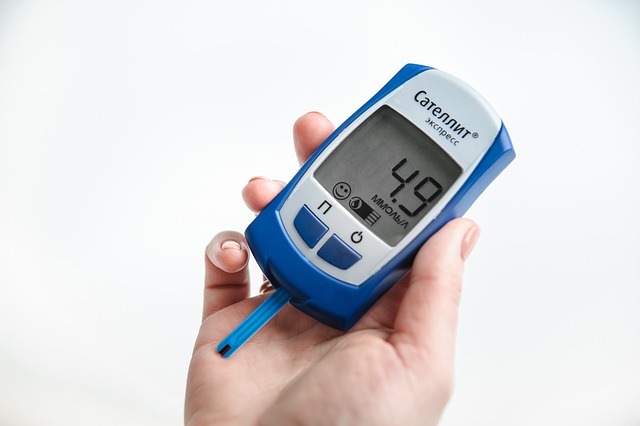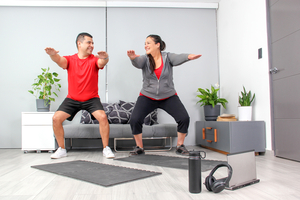The glycemic index (GI) of a food is a measure of how it affects your blood sugar. Foods with a high glycemic index lead to a quick and high spike in your blood sugar levels, followed by a dip. Foods with a lower GI have a less dramatic and healthier effect on your blood sugar.
There are many reasons why people choose to follow a low-GI diet.
- Prevent or manage prediabetes or diabetes. A low-GI diet can reduce blood sugar spikes and help you manage your blood sugar levels.
- Lose weight. A low-GI diet with fiber, protein, and healthy fats can better satisfy hunger compared to eating foods high in sugars and refined starches.
- Gain energy. Skipping the blood sugar spikes means you skip the dips, which means you skip the fatigue and lightheadedness that can come with low blood sugar.
These are some guidelines that can help you follow a low-GI diet.
Glycemic Index vs Glycemic Load: Keep Quantity In Mind
The GI measures the effect of a food on your blood sugar levels, but there is one more detail: it measures the effect of the amount of that food with a specific number of grams of carbohydrates. That means it measures a huge amount of lower-carb foods, such as, say, carrots or watermelon, in comparison to smaller amounts of higher-carb foods, such as, say, brownies, which is also not a healthy carb.
The glycemic load (GL) is a measure that takes into consideration the different amounts of carbohydrates in foods. The GL for a food is calculated by multiplying the GI by the number of grams of carbohydrates in a serving of that food.
The GL can give a more accurate picture of your blood sugar response to a food. Consider these examples.
- Carrots and watermelon have a high GI, but not many carbohydrates per serving. Their GL is low.
- A Snickers bar has a low GI, but a lot of carbohydrates. Its GL is high.
- A piece of pizza has the same GI as an entire pizza, but a slice has a lot fewer carbohydrates than a whole pizza. The slice has a much lower GL.
The GL underscores the importance of carb content and portion size.
Know The Glycemic Index of The Foods You Choose
When you can, check the GI of the foods you may eat before you eat them. A list of low-GI foods can help you select the best foods for your diet.
The GI of foods is not always available because it is not required to be on the label. You can still make a good guess as to the best choices available to you at that moment. Foods that are lower-glycemic tend to be:
- Lower in sugars. Plain yogurt is lower-glycemic than sugar-sweetened, flavored yogurt.
- Lower in refined starches. Beans (less refined) are lower-glycemic than white bread (more refined).
- Higher in fiber. Bran cereal is lower glycemic than cornflakes.
- Higher in protein. Spaghetti with meatballs is lower-glycemic than plain spaghetti.
- Less processed. Whole fruit is lower glycemic than fruit juice.
- Less cooked. Raw carrots are lower glycemic than cooked.
Whatever the GI, remember to keep portions in check to keep the GL low, too.
Lower The Glycemic Index of Foods When You Can
There are a few tricks that can help lower the GI of some of the foods you choose.
- Cook it less. Serve pasta al dente instead of soft and barely cook vegetables instead of boiling them to death.
- Reduce your processing. Choose whole fruit and vegetables instead of juice and smoothies.
- Choose less-ripe fruit. The GI of bananas and other fruit increases as they ripen.
- Add an acid, such as lemon or lime juice or vinegar. For example, you could serve beans and rice with lime juice or roast carrots with balsamic vinegar.
You can always reduce the glycemic load by having a smaller portion. The trick even works for pizza – ask for a thin crust instead of thick to cut back on the high-GI bread.
Balance Your Meal
It is important to remember that your low-GI diet includes not only single foods, but mixed dishes and entire meals and snacks. So, while you might occasionally have a piece of bread or plate of plain spaghetti, you might more often have your bread as part of a sandwich with meat, cheese, and vegetables, or your spaghetti may have sauce and meatballs.
You can use this to your advantage on your low-glycemic diet by balancing each meal to keep it lower-glycemic. A small portion of a high-GI food is fine when it is only part of your meal. The rest of your meal can comprise lower-GI foods. In general, a balanced meal on a low-glycemic diet has:
- Plenty of fiber, with vegetables being a great source and beans, whole grains, and fruit also contributing.
- A source of lean protein, such as fish, eggs, tofu, low-fat dairy, or chicken.
- A small amount of heart-healthy fat, with olive oil, nuts, seeds, avocados, and peanuts being good source.
Nutrition Still Counts When You Balance Your Meal
Nutrition still counts when you balance your meal, so opt for healthy sources of protein and fat. Red meat and butter may lower the glycemic index with protein and fat, but they may not do your weight, blood sugar, or heart health any favors.
You cannot avoid all high-glycemic foods, nor should you try. Some are healthy because of the nutrients they carry. For example, oatmeal has heart-healthy soluble fiber, sweet potatoes are rich in beta-carotene (an antioxidant), and watermelon has a plant nutrient called lycopene. You can balance these healthy foods and include them in your diet in moderation.
Know When To Go High-GI
It is usually healthiest to choose low-GI foods, but sometimes high-GI foods are more appropriate. Eating high-GI foods within 15 to 60 minutes after you finish a hard workout can help speed your recovery. Try pairing 15 to 30 grams of a high-GI carb (that is about 1 to 2 servings) with a source of protein. The carbs help replenish your muscle glycogen, which is their source of fuel, while the protein assists in muscle repair.
These are some possible combinations.
- ½ ripe banana and 1 tablespoon of peanut butter.
- 2 kiwi fruit and ½ cup of cottage cheese.
- 3 oz. of tun on half of an English muffin.
- 1 packet of oatmeal with 2 tablespoon of nuts.
A high-GI food can help raise blood sugar quickly if you feel shaky due to low blood sugar. If you have diabetes and find that you have mild hypoglycemia (blood glucose between 54 and 70 mg/dl) when you test your blood glucose, quickly eat 15 grams of fast-acting, high-GI carbs such as a tablespoon of sugar, a piece of candy, or a half-cup of fruit juice.
Make The Most of Your Low GI Diet
You get to choose whether your low-GI diet is healthy or not. You could keep the GI low with a breakfast of bacon and cheese, lunch of pizza, and dinner of a steak with butter, but you would be cheating your health. Not every low-GI food is high in nutrients and good for your heart and blood sugar. You can see a few examples of low-nutrition, low-glycemic foods here.
A better option is to go low-GI and healthy. You can often go with your gut. Your gut is probably right when it tells you that vegetables and fish are good, croissants with butter are less good, and you are better off eating in moderation than eating too much of anything.
When you choose healthy foods and watch portion sizes, your low-GI diet can help you lose weight and improve your blood sugar and other health measures. You can create your own low-GI diet to fit into your lifestyle and include the foods you love.
Looking for the best prediabetes diet for 2019?











.webp)






